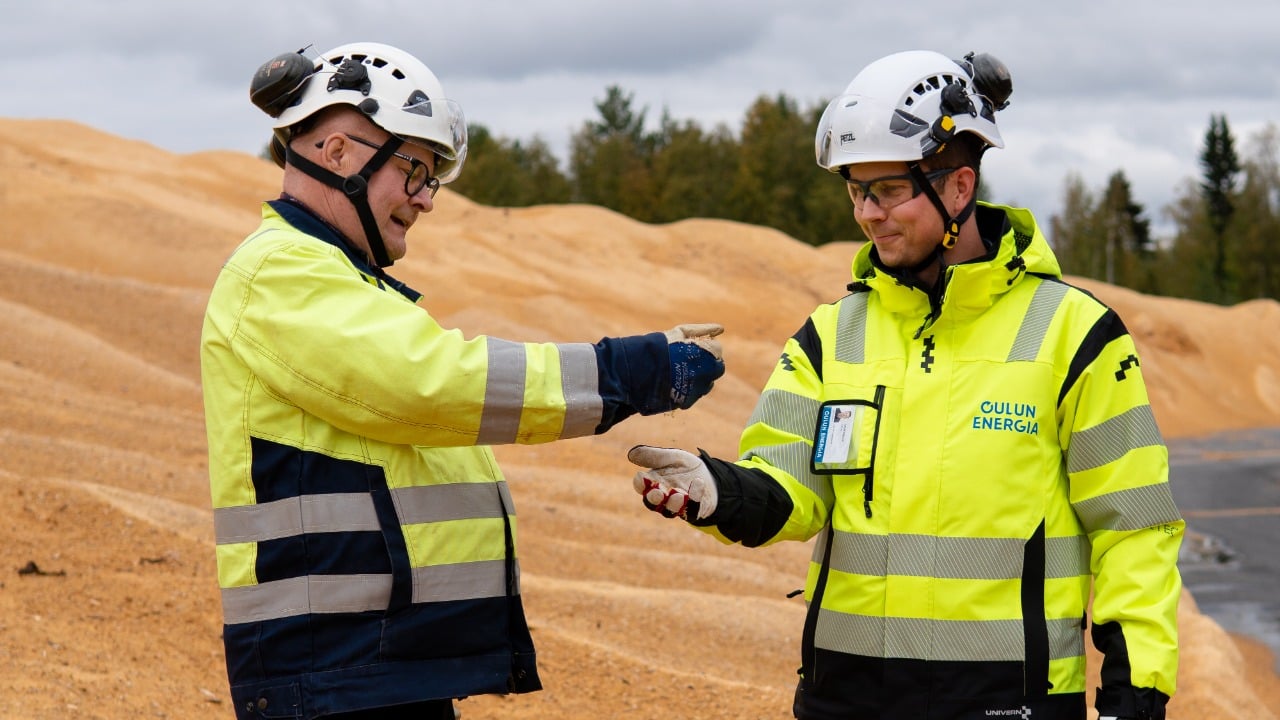District heating protects against fluctuations in electricity prices
How the prices of electricity and fuel are developing is, for good reason, provoking discussions among Finns, who live in the cool conditions of the North. The rise in prices is mainly due to the unstable global situation and the price of emissions allowances levied on fossil fuels. The district heating produced by Oulun Energia, meanwhile, is able to keep its head afloat even amidst global storms. District heating will continue to be produced locally in Oulu now and in the future.
"District heating is produced locally, so it is entirely in our hands," emphasizes Markku Sutinen, Product Manager at Oulun Energia.
Locally generated district heating is an eco-friendly choice
Finland is part of the Nordic electricity market, which is closely connected to the German electricity market, for example. In Germany, the share of fossil fuels in electricity generation is considerable, which also affects the price of electricity in Finland through emissions allowances. In addition, the price is affected by rainfall, especially in Sweden and Norway, which generate a lot of hydroelectric power. These matters do not affect locally generated district heating.

More than 90% of the energy sources used in the generation of district heating are transported to Oulu from within a radius of less than one hundred kilometers.
Thus, district heating is also not dependent on imports, as the heat sources are located close to home. Oulun Energia's district heating is produced at the Laanila and Toppila power plants, where energy is mainly generated from bio- and wood-based recycled waste. It is a truly local product: More than 90% of the energy sources come from within a radius of a hundred kilometers of Oulu.
Could we then say that district heating is also an eco-friendly alternative?
"Absolutely," states Markku Sutinen.
According to Sutinen, a modern circular economy can be used efficiently in the generation of district heating. In this, Oulun Energia has been a true pioneer. Industrial waste heat, such as from Stora Enso's factories, or condensate heat from store refrigeration equipment is recycled economically and in an environmentally friendly manner in the district heating network. Additional energy is provided by heat pumps connected to the network in places. Oulun Energia's district heating also successfully relies on the cogeneration of heat and electricity. Thus, power plants do not only generate electricity from fuel, but also recover the heat generated by the process.
"This makes the efficiency 85%, while by generating electricity alone, it would only be 35–40%," Markku Sutinen illustrates.
Oulun Energia's district heating the cheapest in the country
The self-sufficiency of district heating thus counteracts the price pressures that are overwhelming many of the other forms of energy generation. For example, ground source heat is considered to be a very stable form of heating, even though ground source heat is dependent on direct electricity and therefore on the current price of electricity.
In Oulu, the benefits of district heating are generally well known, as district heating is still the leading option for builders when considering the form of heating. However, many consumers may find the idea of district heating to be simmering in the back of their minds as a pricey option. Markku Sutinen wants to correct this impression.
"Regional pricing may be confusing here. The media talks about the average in the capital region or the whole country. However, district heating in Oulu is a different matter than, for example, district heating in Helsinki. In reality, when comparing the prices of district heating in Finland's 13 largest cities, Oulu is the most affordable in any segment. It doesn't matter whether we are talking about detached houses, apartment buildings, or terraced houses," Markku Sutinen says.
In Helsinki, pricing is still affected by the heavy use of fossil fuels such as coal. The price of emissions allowances does not increase the price of Oulun Energia's district heating, as the combustion of peat, for example, is being phased out completely. In the case of district heating, this will take place as soon as 2024.
